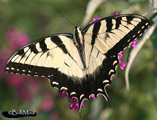Native Plants
Search for native plants by scientific name, common name or family. If you are not sure what you are looking for, try the Combination Search or our Recommended Species lists.
Fraxinus greggii
Fraxinus greggii A. Gray
Gregg's Ash, Gregg Ash, Littleleaf Ash, Dogleg Ash, Escobilla, Barreta China
Oleaceae (Olive Family)
Synonym(s):
USDA Symbol: FRGR2
USDA Native Status: L48 (N)
Gregg’s ash has nearly evergreen leaves that are less than 2 in. long. It is a shrub or sometimes small tree to 19 ft. in height. Smooth, thin, gray bark; slender branches; and pinnate, dark-green, leathery leaves characterize the plant. Flowers are inconspicuous.
The specific epithet, “greggii,” was given for Josiah Gregg, (1806-1850). He was born in Overton County, Tennessee. In the summer of 1841 and again in the winter of 1841-42 he traveled through Texas, up the Red River valley, and later from Galveston to Austin and by way of Nacogdoches to Arkansas. He took note of Texas geology, trees, prevalent attitudes, and politics. At the same time, Gregg began compiling his travel notes into a readable manuscript. His “Commerce of the Prairies”, which came out in two volumes in 1844, was an immediate success. In 1848 he joined a botanical expedition to western Mexico and California, during which he corresponded with and sent specimens to the eminent botanist George Engelmann in St. Louis. Subsequently, the American Botanical Society added the Latinized form of his name, “greggii” in his honor, to twenty-three species of plants. Gregg died on February 25, 1850, as a result of a fall from his horse.
Plant Characteristics
Duration: PerennialHabit: Tree
Leaf Retention: Deciduous
Leaf Complexity: Pinnate
Breeding System: Flowers Unisexual , Dioecious
Fruit Type: Samara
Size Notes: Tree height to 19 ft.
Leaf: Green
Bloom Information
Bloom Color: GreenBloom Time: Mar , Apr , May
Distribution
USA: AZ , NM , TXNative Distribution: West Texas, New Mexico, and Arizona south to Jalisco and Veracruz in Mexico
Native Habitat: Bluffs; talus slopes; arroyos; canyons
Growing Conditions
Water Use: LowLight Requirement: Part Shade
Soil Moisture: Dry
Cold Tolerant: yes
Heat Tolerant: yes
Soil Description: Rocky, soils limestone-based, caliche, sandy, sandy loam, medium loam, clay loam
Benefit
Use Ornamental: AttractiveUse Wildlife: Browsed by deer. Nesting site, cover, browse, seeds for granivorous birds
Attracts: Birds , Butterflies
Larval Host: Eastern Tiger Swallowtail
Deer Resistant: No
Butterflies and Moths of North America (BAMONA)
|
Eastern Tiger Swallowtail (Papilio glaucus)  Larval Host |
Propagation
Description: Seeds may be sown outdoors after collection or stored and stratified then sown in spring. Can be rooted from the juvenile wood of a sapling that has not yet flowered.Seed Treatment: Stratify in moist sand or perlite for 30-60 days at 41 degrees.
Commercially Avail: yes
From the National Organizations Directory
According to the species list provided by Affiliate Organizations, this plant is on display at the following locations:Nueces River Authority - Uvalde, TX
Wildflower Center Seed Bank
LBJWC-1627 Collected 2014-10-01 in Brewster County by Lady Bird Johnson Wildflower CenterLBJWC-1624 Collected 2014-10-01 in Brewster County by Lady Bird Johnson Wildflower Center
LBJWC-1625 Collected 2014-10-01 in Brewster County by Lady Bird Johnson Wildflower Center
Bibliography
Bibref 1186 - Field Guide to Moths of Eastern North America (2005) Covell, C.V., Jr.Bibref 298 - Field Guide to Texas Trees (1999) Simpson, B.J.
Bibref 1185 - Field Guide to Western Butterflies (Peterson Field Guides) (1999) Opler, P.A. and A.B. Wright
Search More Titles in Bibliography
Additional resources
USDA: Find Fraxinus greggii in USDA PlantsFNA: Find Fraxinus greggii in the Flora of North America (if available)
Google: Search Google for Fraxinus greggii
Metadata
Record Modified: 2022-03-15Research By: RSB